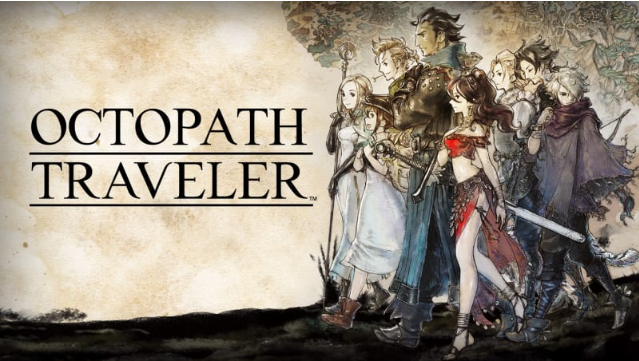Octopath Traveler Review

For week four, the Game Developer’s Association will be reviewing the hidden JRPG gem, Octopath Traveler. From the team behind the Bravely Default series, Octopath Traveler is a modern take on the classic JRPG formula.
The developers took into consideration their success and setbacks with their work on the Bravely Default series. Through closed and opened betas and surveys, they found common issues that players had and took them into consideration.
It was very important for us that we were able to receive so many opinions from players around the world, as this gave us an objective sense of which parts of the game still needed work. And so, rather than by fixing and refining various aspects by trial and error, we were able to streamline the process by focusing on and addressing specific points of concern.
Keisuke Miyachi, Director of Octopath Traveler
This led to important changes such as difficulty balancing and adding a run button. The end result is a charming journey through a beautiful world with a simple yet engaging combat system.
I should note that I have only played the betas and demo of this game. I have gotten a sense of the games systems and stories, but have not interacted with everything it has to offer. I have researched mechanics that I may have not encountered.
Octopath Traveler follows the storylines of eight characters. This includes Ophilia, a cleric on a sacred pilgrimage, Primrose, the dancer making her way in the world after working for a corrupt boss, Olberic, a warrior looking for answers to his past, and many more.
While each story is very different and the characters bump into each other throughout, there is not really a sense of cohesion. Each story is individual and important as the last.
However, you still get to create a party of up to four characters for battle, with each bringing a unique set of abilities. These abilities can help you off and on the battlefield.
For instance, Cyrus the scholar lets you discover a weakness of an enemy at the start of battle, while Tressa the merchant can haggle and buy items you normally can not.
Later in the game, you can even get another job to add more customization as you get further in your journey. Ability selection and party make-up are important to your success.
The battles themselves take a lot of inspiration from the games of old, like Final Fantasy, Dragon Quest, and Persona. Your characters have regular attacks with different weapons, and abilities and magic that costs SP (special points).
Each enemy has a Breaking Point, indicated by a number in a shield. If you hit their weakness, which includes different weapon and elemental types, you lower that number each time you hit. After reducing it to zero, the enemy Breaks, can’t attack for the current turn or their next, and take more damage.
On top of that, each character builds Boost each turn. Boost can be used to attack multiple times on a turn, or power up magic.
These two systems work together to create a timing puzzle. It’s simple at first, but as you get more characters in your party, you gain more abilities to totally demolish your enemy.
I found myself wondering things like, “I could Boost early and break this enemy’s defense, but what if I defend now and wait to strike my next turn and break all the enemies at once?”
It’s a really fun system that can feel more like a puzzle than a battle. It evokes the feeling of playing an old RPG with a bit more depth to it.
But what really sells this package is the sound and art. This game’s artstyle is one of a kind, like an upscaled Super Nintendo game.
There are tons of lighting and particle effects, from lamps hanging from dark caves that illuminate the water dripping from the ceiling to sparks of metal as your warrior wails on a big boss.
Enemies are also gorgeous to look at. The pixel art for them is superb, and sometimes makes me feel bad as my party turns them into dust.
The music and sounds are also excellent. The orchestral score highlights the high fantasy elements of the game. It plays melodic tunes in relaxing towns and fast violins as you enter combat.
The sounds of attacks, magic, and clicking through the menu are really satisfying. Again, it sounds like playing an old RPG, but modernized for modern ears. Beeps and bops are replaced with big clashes and subtle sounds.
While we didn’t get any reviews this week, I can tell you that if JRPGs are your jam, you owe it to yourself to try out this game. Or wait for the sequel coming this year.
Octopath Traveler is available on Nintendo Switch, Xbox consoles, and PC. You can also find out more about the game by coming to the Game Developer’s Association general meeting on February 7 at 6:00 p.m. in Adams Hall Room 3208.
Safe journey, travelers!

